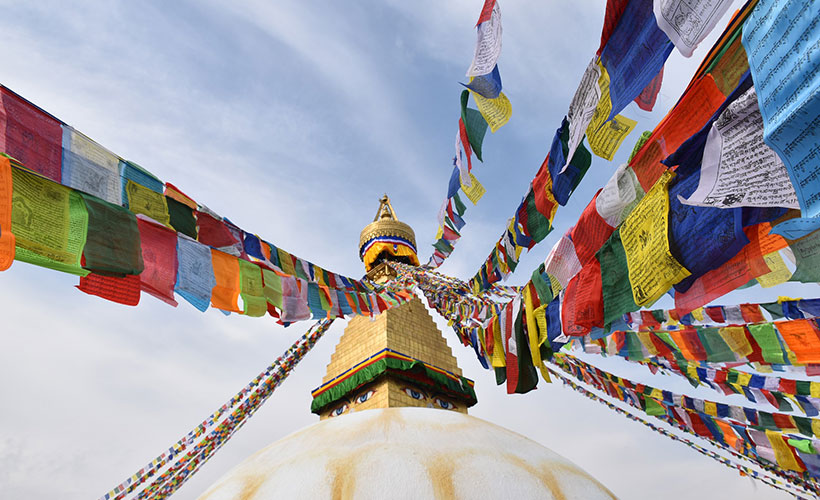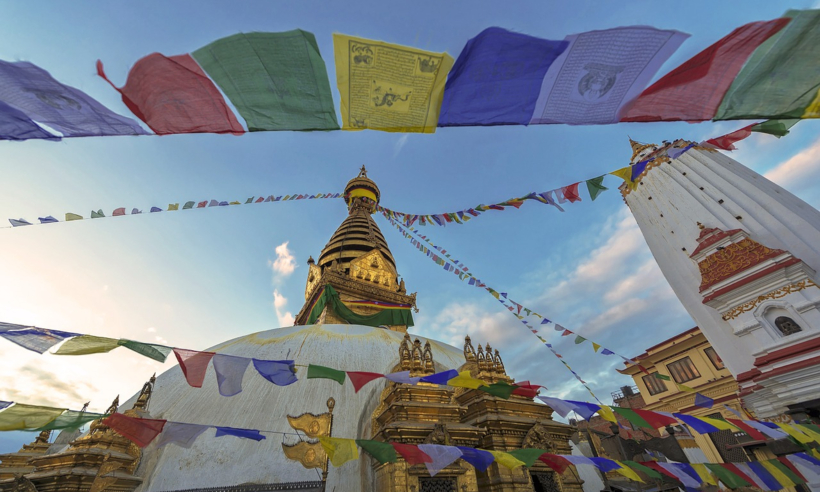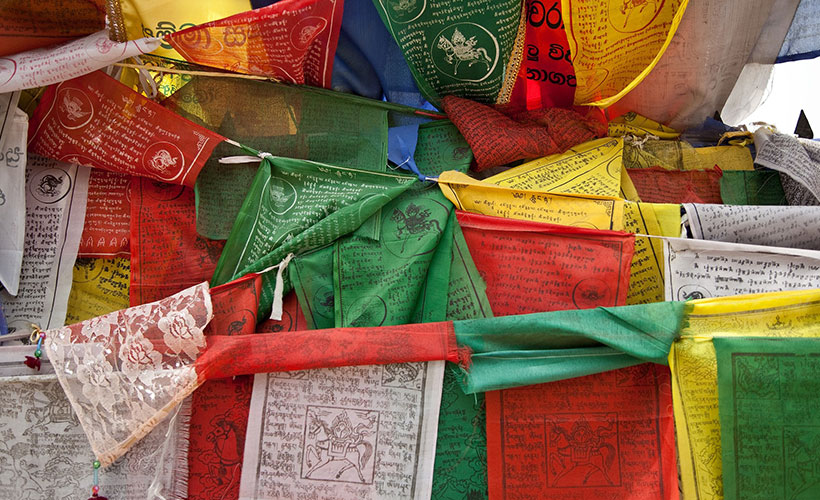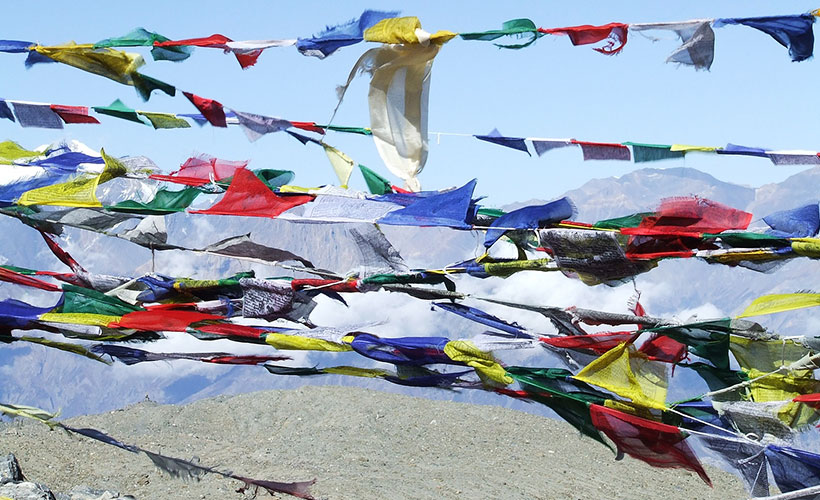Prayer flags are beautiful and calming to look at, and they’re believed to bring peace and prosperity to all around them. Prayers, mantras and symbols are printed on the flags, so that nothing but blessings may be scattered about by the wind blowing through the flags. Here’s the low-down on these beautiful pieces of cloth:
The variants
There are two different types of prayer flags: ‘lungta’ and ‘darchor’. Lungta means ‘wind horse’, and is a string of different pieces of coloured square or rectangular cloth. These strings of cloth are hung at monasteries, stupas and rocks on mountain passes. The flags are usually strung at a degree with one side a bit higher than the other.
Lungta flags are usually made from five different colours, each representing an element or energy and an aspect of the enlightened mind. It’s believed that everything in the physical world is made up of these five elements. The order of the colours are always as follows: yellow (earth), green (water), red (fire), white (wind or air) and blue (sky or space).
When hung vertically, yellow should be at the bottom with blue at the top. Each of the colours are used to balance the five elements and bring harmony. Meanwhile, through these flags, the wind blows good wishes like peace, strength, compassion, and wisdom to all people.
Darchor flags are a rectangular cloth that hangs vertically, attached by its longest side to a pole. Although also a means of blessing like the lungta flags, they’re slightly different, as darchor flags carry wishes of longevity, fortune, health, and money in the wind.
The meaning
The texts on prayer flags are mantras, sutras and prayers. A mantra is a syllable, group of syllable, or sounds that have the ability to change energy vibrations. They are often repeated as a form of meditation.
One of the most widespread mantras is the bodhisattva of compassion: “Om Mani Padme Hung.” On prayer flags, this mantra sends blessings of compassion to the six worldly realms.
Sutras are texts of prose based on the teachings of Shakyamuni Buddha who taught in India 2,500 years ago. While sutras usually have long, medium, and short versions, it’s the short and medium versions that are usually printed on prayer flags. One such version is the dharani that contains a combination of syllables that have symbolic meaning to convey the focus of a teaching, or induce a certain state of mind.
Most other text on the flags are requests, hopes/desires and blessings written by historical teachers of Mahayana Buddhism.
The symbols
Many symbols can be seen on prayer flags. One common symbol is The Wind Horse that’s seen carrying the ‘Wish Fulfilling Jewel of Enlightenment’. It represents good fortune, thus enriching life force energies and opportunities that bring prosperity.
There are also the Eight Auspicious Symbols:
- The Parasol – for protection from the evil eye.
- The Golden Fish – for happiness and beings saved from the sea of suffering.
- The Treasure Vase – the sign for fulfilment of spiritual and material wishes.
- The Lotus – a symbol of spiritual growth and purity.
- The Conch Shell – declares the teachings of the enlightened ones.
- The Endless Knot – for the meditative mind and infinite knowledge of the Buddha.
- The Victory Banner – for the victory of wisdom over ignorance and the overcoming of obstacles.
There are many others such as The Dharma Wheel, The Vajra, The Four Dignities and The Seven Precious Possessions of a Monarch.
How to treat your prayer flags
Astrology plays a part in choosing the day to hang your flags. If hung on the wrong day, it may bring bad wishes for as long as they’re up. Sunny, windy mornings are the best time to hang your flags, and it’s best to hang them where the wind can carry the messages off to everyone around. It’s suggested that old prayer flags get taken down and new ones put up after the Tibetan New Year.
Hanging prayer flags around your home or business creates a feeling of harmony, increases the spiritual atmosphere and brings forth the teachings of enlightenment.
When hanging your prayer flags, you’ll only truly benefit from it if you do it with sincerity and altruism, wishing benefits and happiness to all beings instead of focusing on how it’ll bless you.
Prayer flags should always be treated with respect, as they contain sacred texts and symbols. They shouldn’t touch the ground and should be burned when you want to dispose of them so that the smoke can carry the blessings to heaven.
It’s said that prayer flags shouldn’t be bought for yourself, rather it should be given to you as a present. Once gifted with them, hang them around your home or business to invite blessings and happiness for everyone around.








